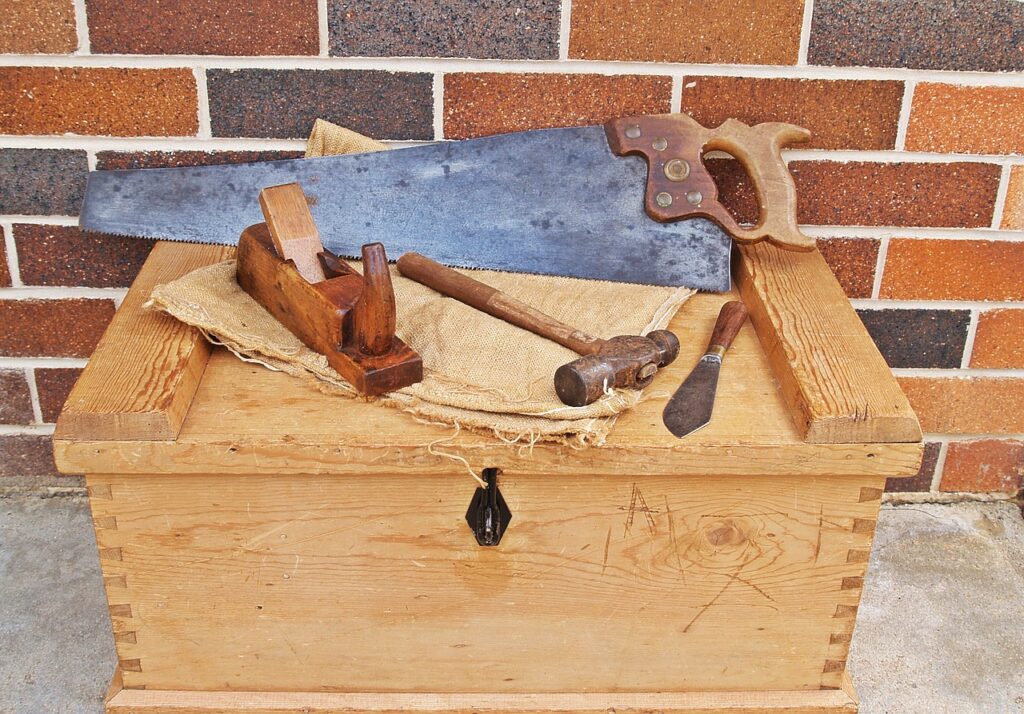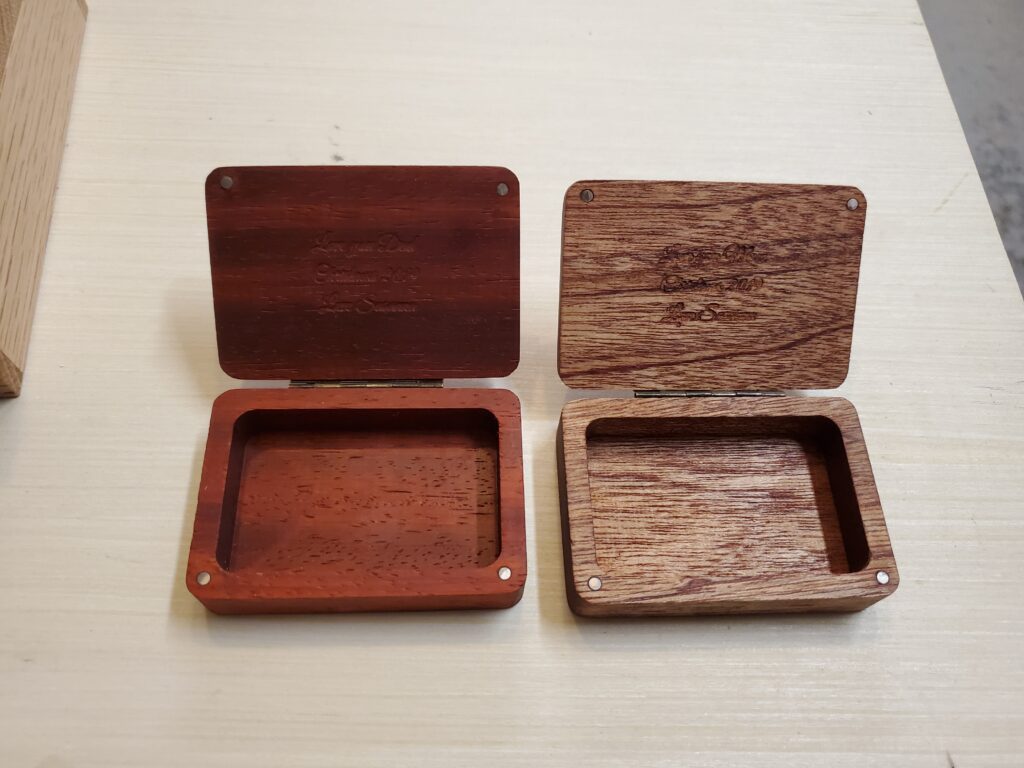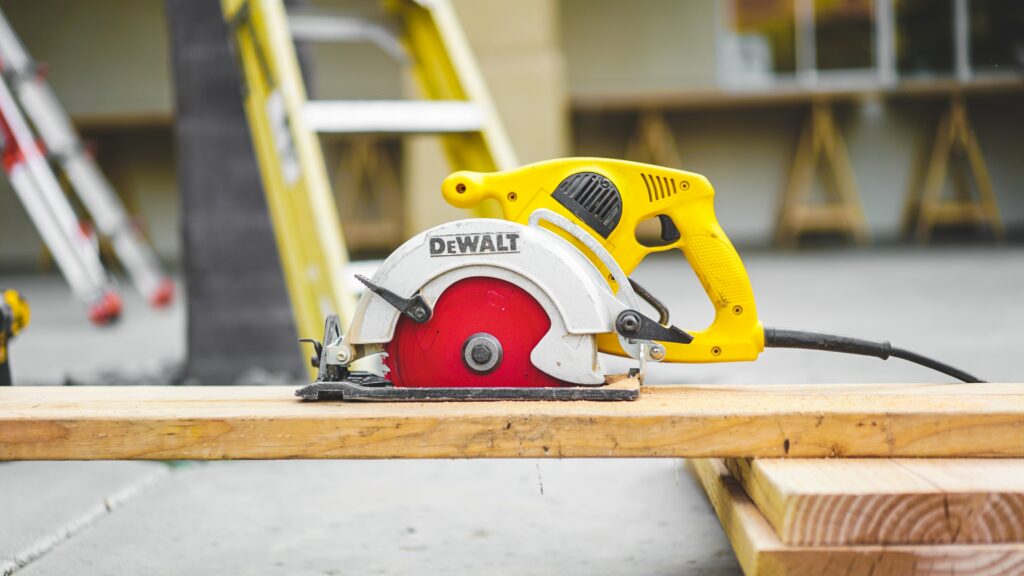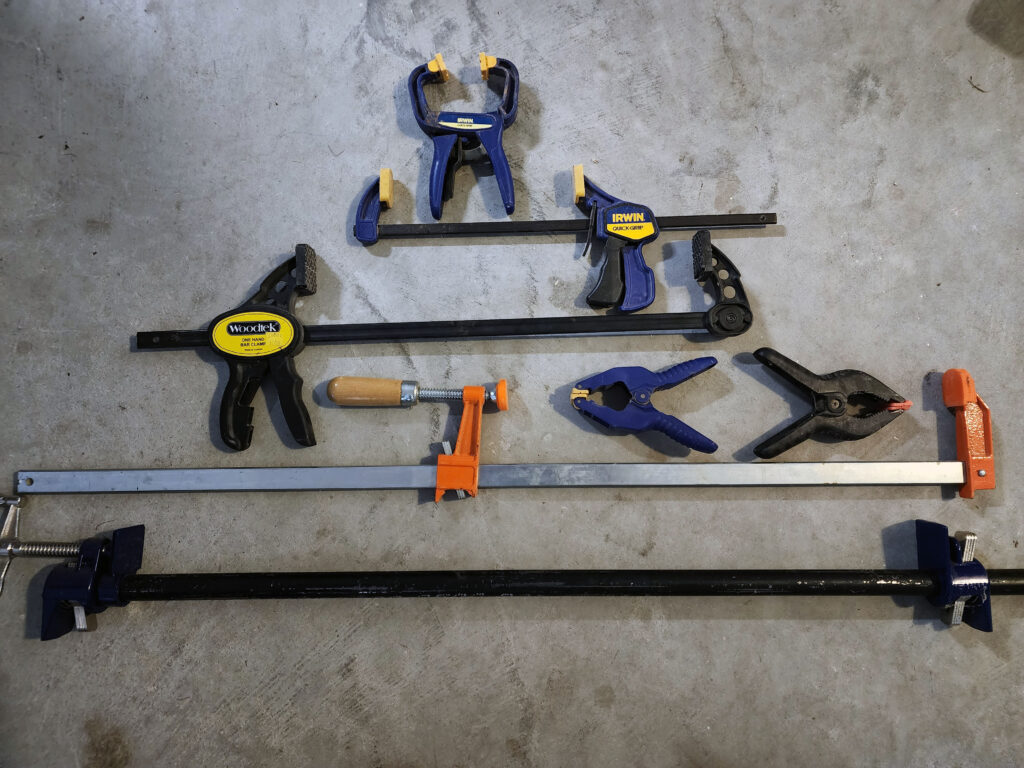
Woodworking is great way to pass time and offers many benefits, but where do you start? Maybe you want to start a hobby with your kids, or for your kids. I built the crib for my daughter and it will be around for her kids if she wants it. It’s not only about building cool projects, it’s also about building memories. Here are a few pointers on how to get started in woodworking.
I will not lie to you and say that I have 100 years of formal training and can cut a dovetail joint blindfolded. Aside from having basic shop classes in school where you build a couple boxes and assorted wood projects, much of my knowledge was acquire from my Grandfather. He was quite the accomplished craftsman and passed on some of his knowledge to me, but more importantly he got me interested in making things.
Even if you aren’t new to woodworking this may help you simplify teaching your kids the process. It can be difficult and sometime frustrating to teach others, especially children. We often forget what it is like starting something for the first time. Woodworking, as with any skill takes patience, which is a valuable skill on its own.
Benefits of learning woodworking
Woodworking has been around for thousands of years and will continue on forever. It’s a skill that will never go out of style. There are so many benefits to starting this great hobby:
Strengthen your critical thinking skills
Critical Thinking seems to be a rare skill, but it can be learned and improved. Learning how to make things helps you build those problem solving muscles. Even if you have detailed set of plans, you are making your own thing, and you may need to figure out a different way to make it work on your specific project.
Accomplishment
Have you ever finished project? Really?
Making something with your own hands brings a sense of accomplishment that is almost indescribable. No only did you finish something, which is a win on its own, you now have something that has value. Try to keep your first project so that can see how far you’ve grown.
Skill to pass on to your kids

The most valuable asset we have is knowledge. The most important thing we can do is pass it down to our children. They can learn valuable lessons from the process, and you get to spend valuable time together. Some of my fondest memories growing up are in my Grandfather’s workshop.
Make the best gifts

Personalized gifts are the best, usually. Assuming you give yourself the time to make it, you can create some amazing gifts that your friends and family will treasure forever. Be careful not to overcommit though, I have had a few occasions where I had to finish up a project the night before, only to apologize that its still smells of varnish.
Make some money
The cool thing about making something is that there is always someone willing to buy it. You may not want to start the next IKEA, but you could improve your skills and sell some projects. At the very least you can fund your next project or upgrade a piece of equipment from your profit. Then you don’t have to have that “Expensive Hobby” discussion.
Create a Workspace
The first thing you need to figure out when getting started in woodworking is a place to actually do the work. Here are a few pointers to get you started
Keep it Simple
No need for a thousand square foot shop with dust collection and every tool imaginable. You don’t even need a table technically, though your knees and back will appreciate one.
A strong, stable work surface will make life significantly easier, and allow you do your best work.
The trick here is to keep it as easy as possible. If something becomes too difficult or inconvenient you won’t bother doing it.
Stay Organized
Most people struggle with organization and keeping things tidy. As much as I want to have a beautiful shop with organized cabinets, I’m not there yet. Some day maybe…
You need a place to keep your tools and materials. Take care of your tools and they will take care of you. If you develop a system for where everything goes and stick to it, then you won’t be wasting time looking for something when you need most.
Be intentional
The space and design for your work space is dependent on what you intend on making. If you want to make bowls or pens, you will need space for a lathe. If you want to build headboards with reclaimed barn wood you will need space to process the wood.
Doing something small like carving or simple jewelry boxes won’t require much space and can be accomplished just about anywhere.
Gather your Tools

Who doesn’t like to buy tools, some people just collect them. I’m not much of a collector, but I do love having tools. It’s more a function thing for me, I just like being prepared for anything.
My biggest advice is to buy the best thing you can afford. Do some research first and only buy what you need now, not what you think you will need later.
Measuring

Tape Measure – A quality tape measure will eliminate a lot of headaches down the road. I would also suggest keeping with the same one throughout a project. There is a chance that they will vary slightly and throw off all your measurements.
Square – Having accurate square will help you lay out lines and ensure that your projects don’t come out like a Tim Burton film set. Unless that’s your goal, in that case, go for it.
Marking tool – I personally prefer a mechanical pencil for marking. They are consistently fine and don’t require sharpening. I have never been a fan of carpenter pencils, even when doing any construction work. Further along you may want to look into a marking knife for those ultra precise joints.
Straightedge – Having a way to draw long straight lines will be essential if you plan on doing anything with plywood or large panels. I would recommend a metal one, since something like a simple yardstick has chance of warping.
Cutting
You need a way to cut wood to the shape that you need. Your requirements will vary depending your intended project. All you really need is a simple hand saw and you can make most projects. Power tools just speed up the process.
Circular Saw – You want something that allows you to cut as square as possible. You can buy a simple handsaw and miter box for pretty cheap but they don’t work that well. A basic circular saw will allow you to make consistent cuts with the help of guides and jigs.
Chisels – Having a quality set of chisels will make for a better experience when working on projects. Even if you don’t plan on doing complex joinery, they can help you clean up edges or make fine adjustments for fitting pieces together.
Carving Knives – If you plan on doing any kind of carving, you will obviously need a carving knife or two, or 10. There are hundreds of shapes and sizes for any kind of cut you need to make.
Drill/Driver – You will need a way to make holes or drive screws. Despite what the internet says, brand is not that big of a deal. I wouldn’t go too cheap, but no need to break the budget just because someone says that the red one is better than the yellow or green.
Clamping

You need to have some way of holding things down while you work on them, as well as hold things together while assembling. There is a wide variety of clamps out there and you don’t need to go crazy right now. They aren’t terribly expensive, but since you will need several for a single project they can add up. I recommend buying what you need as you make projects. Before you know it you will have a wall of clamps you can clamp whole world down. Really, you can never have too many clamps.
Did I mention that you will need clamps?
Sanding
My least favorite part of working with wood is sanding, and of course it is one of the most important parts. Some people actually enjoy the simple process, but I struggle with keeping my motivation to continue the project.
Sanding blocks – you can use a block of wood to get started or purchase a special sanding block if you prefer. Hand sanding will get the job done and is sometimes the only option.
Orbital sander – An electric sander will be your best friend, despite being noisy and a bit messy. They can remove material very quickly, so you will need to pay attention. If you need suggestions for a new orbital sander check out 5 best orbital sanders for beginners.
Safety
While not a sexy topic, neither is not having half of your hand. You are handling sharp tools that don’t care what’s in front of them and toxic chemicals.
Eye protection – Were safety glasses to keep your eyes intact. Having something lodged in your eye is not fun. Remember, eye patches are not actually cool.
Hearing protection – Hearing loss and tinnitus don’t get better. Power tools are loud and it’s not that hard to put in some earplugs or even some headphones. I don’t know about you but I want to keep my hearing as long as possible.
Lung protection – Sawdust is not good to breathe and can have lasting effects on your health. A simple dust mask while you are sanding is highly recommended. Also consider a respirator when working with potent chemicals like stains and finishes.
Skin protection – Wearing rubber gloves when using chemicals is important. You do not want dark walnut colored fingers, and you probably don’t want all the carcinogens that come with it. It is not recommended to wear gloves when operating power tools, they can get caught and pull your hand into the danger zone.
Gather your Materials
You can’t be a woodworker without some wood to work with. Now that we have place to work and the tools to function it’s time to figure out what you want to make and gather up your materials.
Wood – Deferent species of trees offer different characteristics of woods. Typically hardwoods, such as oak or walnut, are used when making furniture as they offer a more consistent grain pattern and superior durability. Softwoods like pine are usually used for construction but have their place and can make for some beautiful projects.
Big box stores offer a few options for lumber but can be overpriced and limited. If you have the option for a local hardwood supplier or sawmill, you will be better off. It is possible to purchase wood online but shipping is expensive, so would check local first.
Glue – There are very few projects that you won’t be using glue on. There are many brands and styles of wood glue. In most cases it doesn’t really matter which one you use. Just make sure it is for wood.
Fasteners – Unless you really want to focus on traditional joinery, which is fun and looks great, you will be using some screws or nails. They come in all shapes and sizes fit any project. Just buy what you need for that specific project, then just keep an organized inventory for future projects.
Sandpaper – You can’t sand anything with out something abrasive. Most woodworkers usually keep 80, 120, and 220 grit. You get what you pay for though, cheap sandpaper wears out much faster than premium brands.
Finish – Wood is an amazing material but without protection it won’t last long. Use stains to alter the color of the wood to really customize it. There are many options of finish out there and even more opinions on which to use. Pick something that fits the look you are going for and is easy to apply.
Pick your Project
You should be bursting with excitement right now. The real work is about to begin, you just need to figure out what to actually make. You may have already figured it out, but slow your roll a minute and consider a few things before you sink a bunch of time and money into something.
Start small – I know its tempting to get going on a resin waterfall table or some other crazy project that you saw on TikTok or Pinterest. At this stage you want just to finish a project. Make a box or small table first and finish it completely. The techniques are essentially the same but the the time invested is much lower. You want to build momentum starting out.
Don’t overthink it – If you have no clue what to make, just pick something small get started. Don’t overthink it, you can build another project after you finish this one. I have a habit of over thinking how to make something that I don’t even get started. Just get started.
It will not be perfect – No matter how much time you put into a project it will never be perfect. The great thing about hand making something is that all those little flaws actually make it better. Also remember, you are your worst critic. Most people won’t even notice the imperfections.
Ask for Help
One thing that most people, especially men, struggle with is asking for help. I’m guilty of it myself. You need to put away your ego ask for help sometimes. People probably judge you more for struggling along alone, than if you just asked for a hand doing something.
Find a Local class or Online course – Why spend hours, days or years trying to figure out how to do something that someone else has already done. Why not spend a little time and money and learn from an expert. Your time is limited and valuable, make the investment in yourself and gain years worth of knowledge in a short period of time.
Use the Internet – Well, if you are reading this then you already are. What I mean is, the internet contains a massive amount of information. If you want to learn how to make something, there is likely a dozen videos on how to do it. While I would selfishly want you to only consume my content, that be doing a disservice to you, and to the work of other amazing content creators out there.
Join a Social Media group – Just about every social media platform offers a plethora of dedicated groups for hobbies. There are many woodworking groups out there where you can ask questions or gain inspiration.
Conclusion
You made it the end, or at least skimmed to the end. For that, I thank you. I hope that you gained a bit of knowledge or insight for getting started in woodworking. I also strongly encourage you to start this adventure with your kids. Learning a new skill is always great, but building memories and strengthening relationships is what matters most.
Leave a Reply